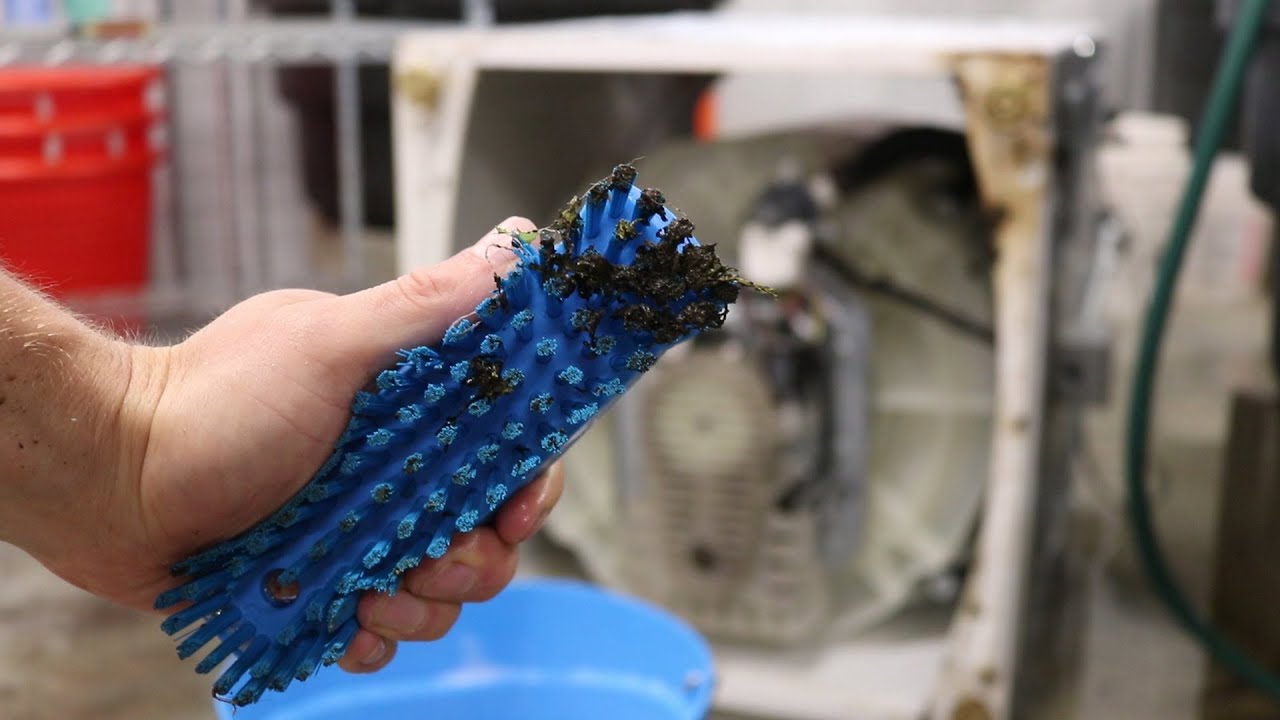Washing machine greens spinners are often used for drying greens on small farms. They do require attention to cleaning and maintenance in order to keep them in sanitary working condition. This blog post highlights some tips to cleaning your greens spinner and provides links to six videos that focus on how to best clean these machines. You can watch the whole playlist below.
Cleaning Tips Playlist
Video 1: Produce Safety Considerations – For Drying Greens in a Washing Machine
Video 2: Cleaning Tips – Washing Machine Greens Spinner
Video 3: Maintenance Checks to Look For – Washing Machine Greens Spinner Tips
Video 4: The Daily Clean – How to: Washing Machine Spinner Cleaning (Part 1)
Video 5: Drum Cleaning – How to: Washing Machine Spinner (Part 2)
Video 6: Chassis Cleaning – How to: Washing Machine Spinner (Part 3)
Produce Safety Considerations
- Start with a new machine whenever possible. Old machine are often rusty and hard to clean. They also have unknown past use and could be sources of contamination.
- Use of a basket insert to hold the greens vs. placing the greens directing in the machine. This makes the basket as the primary food contact surface which is easier to clean. The use of a basket can also improve the flow and efficiency of the washing activity saving effort and time
- Use a lid or cover for storage to keep pests, dust, and debris out of the machine.
Cleaning Tips
- Disconnected power before cleaning.
- Use water, detergent, a cleanable brush, single use scouring pad or sponge.
- Remove the drum to clean the catch basin and drain area.
- While drum is removed, clean the outside and bottom of the drum.
- Use caution to not get cut on sharp metal.
- Clean or replacing any split tubing that has been used to cover sharp edges.
- Remove panels, if able to allow for complete drying after cleaning.
- Lay the machine down to clean around the bottom.
- Clean the chassis and frame.
- Use caution to keep the motor dry during cleaning!
Maintenance Checks
Excessive Noise
All equipment should be regularly inspected to ensure their condition and operation. Converted greens spinners are no different. If there is excessive noise you should inspect all fasteners such as nuts, bolts, and screws on your machine. The bolts that hold the motor assembly to the basket can back out, and cause excessive slap from the bottom and eventually cause failure.
Most machines have leveling feet on the four corners which should be used to ensure the machine is stable when in use. Excessive noise can also be produced by uneven loads or insufficient ballast (weight) in the drum. Manufacturers include added weight, also known as ballast, in the drum to help manage balance of the drum when spinning. This can be damaged when holes are made in the upper fluid filled ring.
Proper Drainage
Make sure your spinner is draining safely away from all food contact surfaces and electronics. It should not drain by pouring water directly over the floor. If you’re discharging the drain water to the floor, position the spinner over a floor drain. This will prevent water from being tracked all over your wash/pack area resulting in a larger mess to clean up.
Share This Blog Post
https://go.uvm.edu/cleaningtips
Related Greens Spinner Blog Posts
Greens Spinner Conversion Guide (Coming soon)
Washing Machine Greens Spinners: Shopping Tips
Acknowledgements
This resource was developed as part of the Food Safety Outreach Program under grant number 2020-70020-33003 from the USDA National Institute of Food and Agriculture and also funded, in part, by the USDA Northeast Sustainable Agriculture Research and Education program through award LNE19-375 and by the Food and Drug Administration through The Vermont Agency of Agriculture Food and Markets via the Integrated Extension Educational Programming in Support of the VAAFM Produce Program Grant 02200-FSMA-2018-01. The views expressed in the publication do not necessarily reflect the official policies of the U.S. Department of Agriculture, the U.S. Department of Health and Human Services or the Vermont Agency of Agriculture; nor does any mention of trade names, commercial practices, or organization imply endorsement by the United States Government or the State of Vermont. It is offered without regard to race, color, religion, sex, sexual orientation, gender identity, national origin, disability, protected veteran status, or any other category legally protected by federal or state law.

